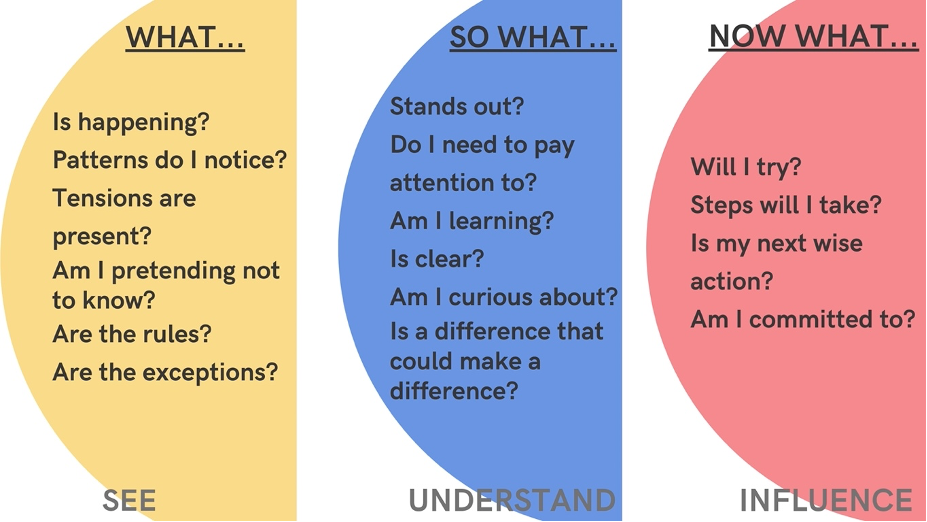Putting it All Together
In this final module of the course, our emphasis is on sense-making and harvesting key insights that can support you to implement this work going forward. To do that, we will introduce a simple method, the adaptive action cycle, which comes from the field of Human Systems Dynamics (HSD) and is used to take action in contexts of complexity or what HSD call “dynamical change” (2014). This cycle of reflective questions can be applied in many contexts, from a quick post-mortem on a meeting, to a project evaluation, to insights harvesting from a course and more.
Each module has emphasized the importance of learning core concepts and considering how they are or are not relevant for the specific needs and realities of your work and context. This course is also built on the assumption that the complex systems in which the work of dialogue and engagement occur, are unpredictable, which means outcomes and patterns can be influenced and moved in a desired direction, but not planned and controlled (Holladay, 2014). This also means that any program or plan will need to adapt to the changing conditions that emerge once it is implemented.
This cycle of questions is one tool, among many, for making sense of and choosing wise action in these kinds of unpredictable contexts. The questions themselves, while following a simple pattern of what (seeing and observing), so what (understanding, sense-making and pattern spotting) and now what (choosing wise actions and next steps) can be modified as needed. Additional examples are in the image below (Dempsey, 2020) and available here.
(Dempsey, O. (October, 2020) Finding Points of Leverage in Uncertainty, presentation to the BC Public Service, image adapted from the Human Systems Dynamics Institute)
Instead of waiting until the end of an engagement cycle or for the completion of a project, consider how you might integrate these reflections on a regular basis. This consistent practice of reflection, sensemaking and action can support you to track the changing conditions in which your work occurs and to respond skilfully, course correcting if or when needed. It is part of what Adrienne Maree Brown (2018) describes as, “Get[ting] into right relationship with change,” a skill that is not only important as practitioners of dialogue and engagement, but is particularly relevant in the evolving and unpredictable filed of climate adaptation.


